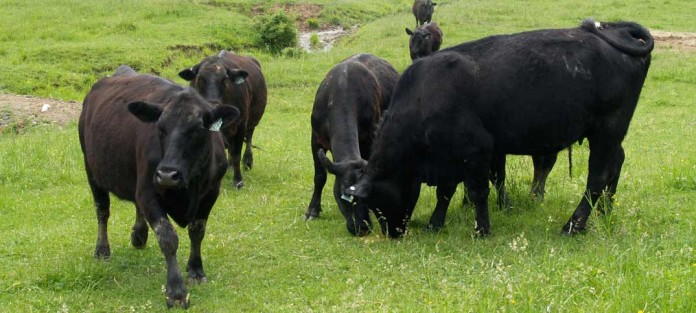Small cowherds started up 10,000 years ago when the first farmers decided they would rather herd cattle than hunt them. Cows became second nature to farmers over the millennia and made the trip to America with Spanish expeditions more than 500 years ago.
British cattle came over in the next century, followed by Continental European breeds in the 20th century. We tried them all, and some are still trying them all.
Growing herd
Those first cattle grew to 5 million head by the 1870s, when cattle drives and commerce helped open the West. Books and movies say cows added to the adventure and romance.
Businessmen transformed the Spanish word for small farms into large ranches and brought science to their enterprises. They crossed the native stock with British breeds to get more tallow, and noticed more flavor for some reason. Marbling was largely unknown until scientists began studying beef cuts and cookery, which led to USDA grading a few decades later.
Some things seem inevitable from across years and distance. Of course, we would have cows in America, and we would figure out how to make better beef. But historians point out it was not pre-ordained that Napoleon would lose his empire and feel pressure to sell the Louisiana Purchase, or that the United States would buy and subsequently embark on its westward path and “manifest destiny.”
Historic events
Certainly no war is a sure thing, including the Union’s victory in 1865. To get to where we are today, certain things had to happen a certain way, despite controversy along the way. That’s the big and old picture. It’s much less likely — as a percentage of our population — that you would raise cattle in 2015 and ’16. A lot of decisions and perhaps a little luck brought you and the cows to this point.
Pivotal moments
Laying aside the defaults that come from procrastination or waiting to see what happens, there have always been critical, pivotal moments. Sometimes it seems we arrive where we are today against all odds. You would not be reading this, would not exist, if your parents or ancestors long ago and far away had made different decisions.
Survivors write harrowing autobiographies; we all look back as the ones who made it. The herd you have today does not include those you culled or were taken by lightning or lost their first calf and didn’t get a second chance. Those that were once replacement heifers — 100 percent in a closed herd — would not exist without your management.
Maybe you can’t trace your lineage for centuries, but you know how you came to be where you are today, even if that’s a short story. You may know when the family first raised cattle, perhaps when they first raised a certain type or breed.
We are who we are because of genetics and environment. How we were raised and educated brought us to career choices, business and personal propositions, what we said and did, or chose not to say or do. We make decisions every day and some of those affect our cows. On what do we base those decisions if not a firm commitment to give it our best?
Improving the cowherd and the beef we produce is a very deliberate path along a planned course. There will be obstacles and forks in the road, but it’s up to us as herd managers to get past those and decide which way is best for our cows, our families and our beef community.













